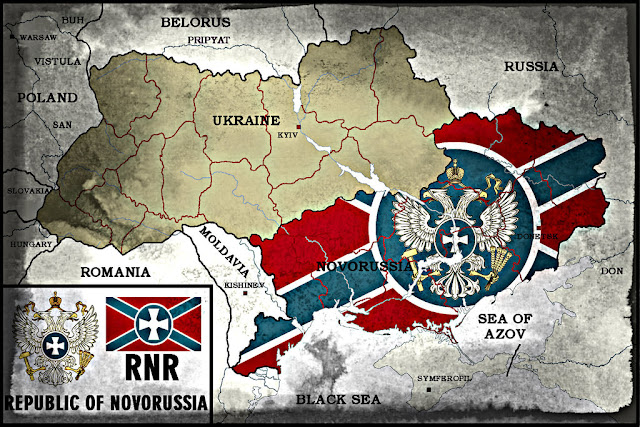The Crucial Difference Between Donbass and Oregon

Despite a few superficial similarities, the difference between the rebellion in eastern Ukraine and armed Oregon ranchers standing off with the US federal government couldn’t be greater.
A lack of understanding regarding the nature of power and how it is brokered has led to many mistakenly believing there is any merit to what the Oregon ranchers are doing, besides providing an example of precisely how not to stand up against increasingly tyrannical special interests. This is not to say the ranchers, or even Occupy Wall Street should not be standing up against the US government, it is just that they are going about it in completely the wrong way – compounding their problems, not solving them.

Perhaps by examining the numerous and critical differences between the Donbass fighters and the Oregon ranchers, readers can see the chasm between the two, and perhaps how, in certain aspects, to bridge that chasm.
Donbass vs. Oregon
1. Backing: Donbass has the backing of a superpower – Russia. This includes substantial backing across the media, in terms of political support, and logistical and military support ranging from the implicit threat of Russian retaliation should Kiev and its NATO backers step over certain lines, to – according to NATO – direct military assistance.
In all likelihood, the only superpower backing the Oregon ranchers is the US federal government itself – not a single militia in the US has gone un-infiltrated in the last several decades. Geopolitical analyst Eric Draitser in a recent piece admits he is unsure as to the true motives and intentions of the Oregon ranchers, but has dug up a significant amount of information casting serious doubts over not only their objectives, but the very character of its leadership.
2. Weaponry: The Donbass fighters have a standing army which includes machine guns, military-grade rifles, rockets, missiles (including anti-aircraft systems), artillery, counter-battery radar, and even main battle tanks. They have the infrastructure to resupply front lines with food, weapons, and fuel, and the ability to protect their logistical lines leading to and from areas of engagement.
The Oregon ranchers have 5.56mm rifles, which can be quickly overwhelmed by numerical superiority, superior firepower, and armor – of which the federal government has all in much abundance.
3. Supporting Networks: The Donbass fighters are but one factor in a much larger eastern Ukrainian rebellion. They function under their own government which controls all infrastructure from electricity to water to communications in the region. They also have a functioning economy and are receiving significant humanitarian aid from neighboring Russia.
The Oregon ranchers have some boxes of supplies they bought from the very Fortune 500 corporations that created the overbearing regime they are “standing up” against. Their failure to build a sufficient and sustainable infrastructure to underpin their armed confrontation illustrates a significant lack of foresight and strategic thinking, a lack of thinking not shared by the federal government it has taken up arms against.
The Oregon ranchers have already painted themselves into a corner with their polarizing ideology and the outright racism and bigotry exhibited by several of their members. They’ve automatically alienated themselves from many other Americans who might have otherwise supported them if they used more sensible methods and had an actual plan worth supporting.
5. Understanding: The fighters in Donbass know their enemy lies far beyond the Ukrainian soldiers they face on the front lines. They know it ultimately goes even beyond Kiev – all the way to Brussels, NATO, and even Washington, and they’ve been clearly factored this into their strategy from day-one.
The problem the Oregon ranchers are standing up to is not just a federal agency dealing with land use – it is a problem that can be traced all the way back to Washington and Wall Street. A strategy that has not accounted for this or developed any sort of plan to confront, is doomed to fail.
While lengthy, the article, “Showdown in Oregon: How to – and How Not to Fight Tyranny,” introduces readers to the very playbook used by empires and rebels alike regarding insurgency and counterinsurgency. It lays out how real resistance – or the rolling back of an entrenched system -requires more than just armed force. It requires socioeconomic considerations, control over crucial infrastructure, economic plans, education, inclusive political agendas, and much more.
The playbook is essentially the recipe for wresting power away from one party, and placing it into the hands of another and would work just as well for the “good guys” as it has for the “bad guys.” And while much of it requires patience and hard work, it should be noted that the people of Donbass have followed all of the prescribed actions for taking and keeping power and have succeeded, while groups like the Oregon ranchers and Occupy Wall Street have followed virtually none of them and have failed both utterly and repeatedly.





